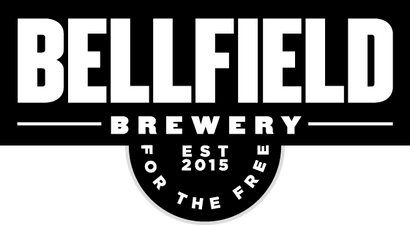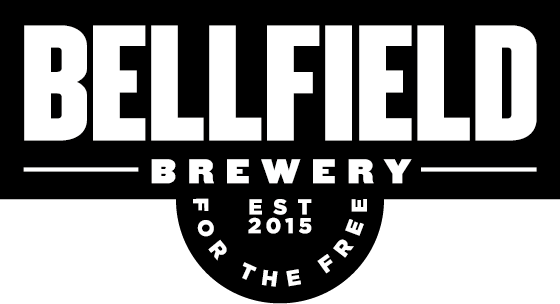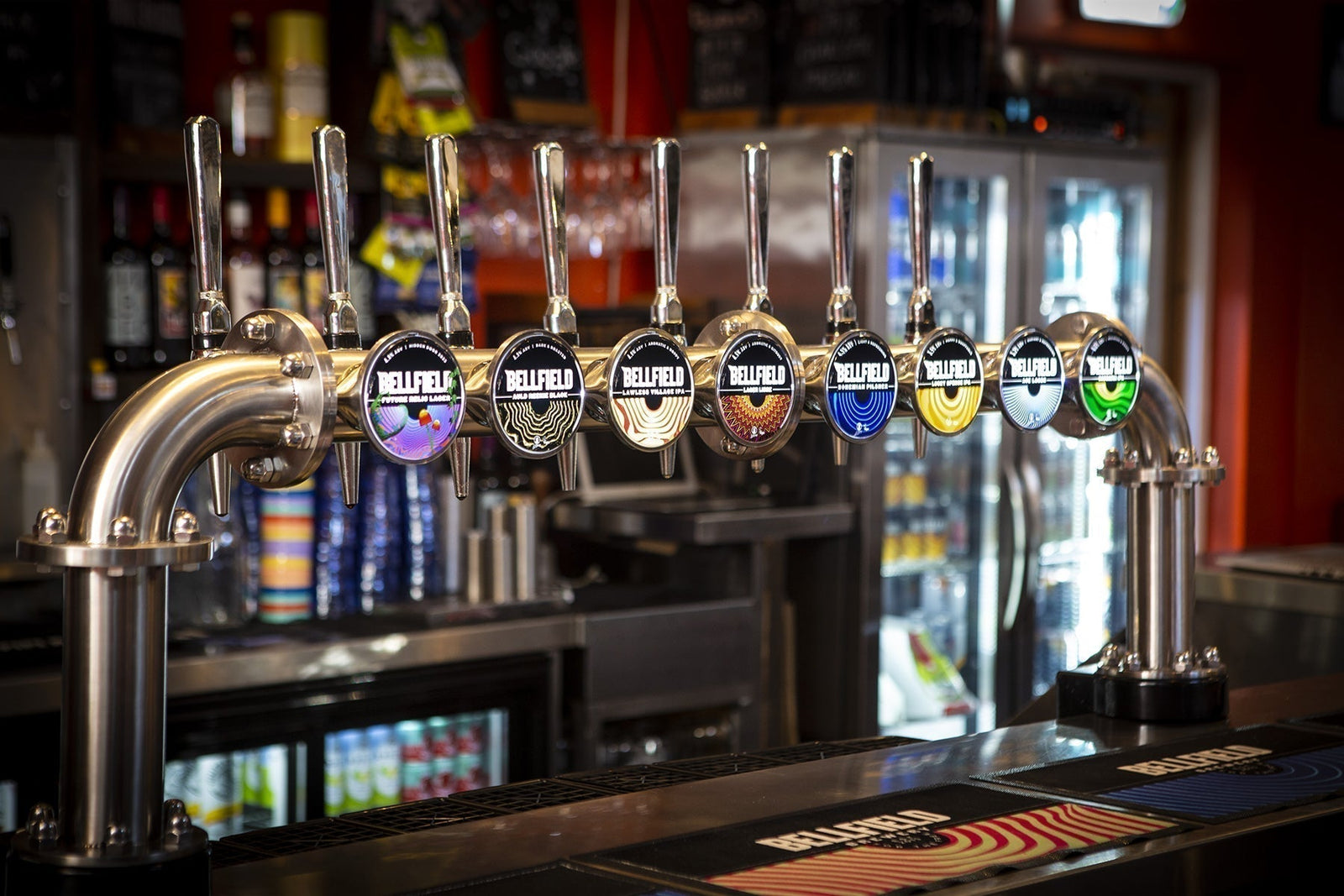Lockdown Blog #5: Hops

Hops.
We’ve become a bit obsessed with the hops we’re growing in pots outside the office windows, just nicknamed “Spud and Renton” by one of our customers.
But though we’re loving seeing the plants grow – sometimes by as much as three centimetres a day - this variety is not what most people think of as the ‘real’ deal.
It's a specially-bred, dwarf or hedgerow variety called "Prima Donna" that we’re growing in our beer garden primarily for decoration and shade, though we will definitely try brewing with it once mature, because this tiny hop apparently packs a big flavour punch (rich, citrus character, flavours of orange peel and dried apricot producing a fruity, slightly spicy note in stronger flavoured summer beers and IPAs).
Most commercially grown hops grow up to seven metres high and a hop ‘bine’ – when mature – can weigh 12kg, so they need strong and tall supports.
Usually hops are trained onto strong twine or rope and they climb vertically, twisting clockwise up the twine.
In the Northern Hemisphere hops twine clockwise, while they go counterclockwise in the Southern Hemisphere, guided by the sun.
Hops grow best between latitudes 35 and 55 degrees north or south of the equator, because of the longer days during the growing season.
Though hops have now become synonymous with the explosive growth of craft beer, the addition of hops to alcoholic beverages may not have originally been for the flavour at all, but for their preservative, “bittering” qualities.
They became widely used in brewing in Europe in the 15th century as brewing became more commercialised and was largely controlled by the hop growers.
While the words ale and beer mean much the same to us, “ale” originally referred to brews produced from just malt – no hops – though it was sometimes flavoured with herbs or honey.
According to the British Hop Association, this was the original drink of the Anglo-Saxons.
Meanwhile “beer”, a brew where hops were added into the boil, for bitterness and aroma, probably came originally from Germany; it overtook ‘ale’ in popularity by the mid 17th Century.
When we think of hops growing in the UK, we mostly think of Kent and the south east of England.
The early 1800s were the golden age of the UK hop industry; a huge workforce was needed to harvest the hops, by hand, and well into the 20th century, entire families would spend their summers picking hops in the countryside.
This tradition continued into the early 1900s but then demand for hops began to fall, with the advent of pasteurisation.
The UK hop industry took a further battering in the 1970s when lager - which uses fewer and specific hops - became popular.
Now the world’s biggest hop producing countries are Germany, USA, China, Czech Republic and Poland.
And the craft beer revolution has ushered in a huge revival of interest in hop varieties and the incredible flavours and aromas they can impart.
Like us, most UK breweries now buy in their hops from USA and Europe, often pre-buying their hops several years in advance, to ensure supplies of particular varieties and use a wide portfolio of different hops, carefully selected to add bitterness, flavour and aroma to their beers.
Hops are added at different points in the brewing process, depending on the final result a brewer is trying to achieve. Particular hops are chosen for ‘bittering’ while others are chosen for the ‘top notes’ or aroma they add, especially when ‘dry-hopping’ (once the beer is in the Conditioning Tank).
At Bellfield, we dry hop using a ‘hop rocket’: a special piece of kit that allows us to use dried, pelletised hops and to use them very efficiently (hops are expensive – anything up to £25-30 per kilo). We also use a variety of hops ranging from continental classics, such as Saaz, traditionally used in pilsners, to German (Mandarina Bavaria) and American hops (Azaacca™, Cascade Centennial and Mosaic).
Our brewer Keith has just finished brewing a single hop, Mosaic IPA (5.6% ABV). It smells wonderfully of tropical fruits – pineapple, mango – and we can't wait to have a pint in the sunshine.
His favourite hop is 'Cascade'. Grown in the American northwest, it first came out in the early 1970s. Now it is grown and brewed with, across the world. Cascade is found in classic beers like Sierra Nevada's 'Pale Ale', and Anchor Brewery's 'Liberty Ale' - two beers which helped to define American craft beer for decades to come.
“This hop was used in the early days of the American craft beer industry; its flavours and aromas helped to define the classic US west coast IPA. We use it in our Lawless Village IPA and Session Ale. Its flavours of citrus, pine, lime and lychee are found in countless craft beers all over the world.”
Our R&D brewer and brand ambassador, Sally says she couldn’t name a favourite hop:
“Much like I couldn't specify a favourite beer as many are very much suited to a time, place or particular food match. We recently had the opportunity to do some assessments on raw hop materials for the creation of our limited International Women's day release "Mimosa". One of the hops we used was Azacca™ which has a beautiful tropical note of mangoes and an orange-like citrus edge, perfect for a refreshing, juicy IPA style beer. We all liked it so much that it ended up forming the bulk of the dry hop blend we created. It's a relatively new hop that is a descendent of Northern Brewer and Summit™ has emerged from the breeding program of the American Dwarf Hop Association.”
Now the hop vine called out from the tree,
the barley spoke from the end of the field,
the water from the Kaleva spring:
'when will we be joined together, when to one another?
Life alone is dreary; it is nicer with two or three.’
[Excerpt from the old Finnish Saga, the Kalevala that tells a tale of the creation of beer, among other things]
There’s loads more we could write about hops and we’ll return to them in future blogs.
And when things return to normal, we hope we might see you at one of our Hop Sensory sessions in the tap room when Sally takes you through smelling, tasting and identifying raw hops and hops in beer.
Meanwhile if you’ll find our full range of beers in our online shop, available for contactless collection from the brewery or for delivery, UK wide. You'll find the new Mosaic IPA (unnamed at time of writing) in mini casks soon; keep an eye on social for details.
Cheers, Team Bellfield





